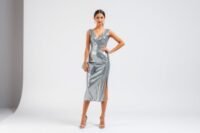What to Wear Running: Your Essential Guide
Published: 22 Apr 2025
Hey there, welcome to Lifestylo Hub! So glad you stopped by! If you’re into comfy outfits, real life style tips, and just want to feel good in what you wear you’re totally in the right place. Oh, and if you missed it, we recently shared a fun post on types of skirts and skirt styles. Go give it a peek, it’s super helpful!
Now, let’s talk about running. Ever wonder what to actually wear when you go for a jog or a run? Like, stuff that won’t leave you all sweaty and uncomfortable? We’ve got you covered with easy tips from the best shoes to weather-friendly gear. Let’s keep it simple, comfy, and fun!
The Basics of Running Clothes
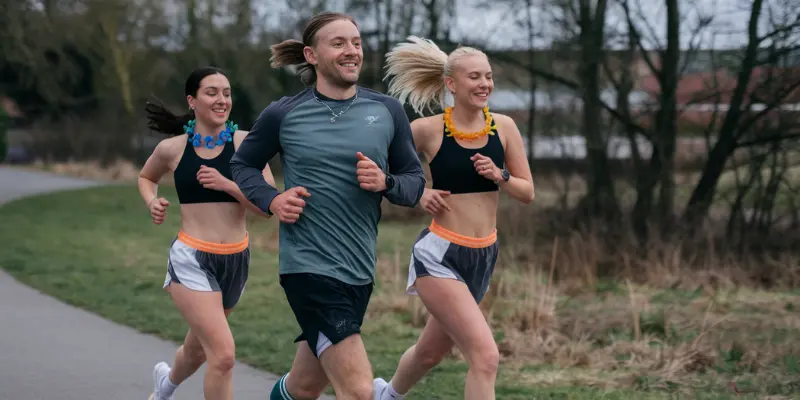
Running in the right clothes makes a huge difference. The wrong outfit can leave you sweaty, chafed, or just plain uncomfortable. Let’s break down what to wear running so you can focus on your run, not your clothes.
Clothes for the Top Half
Lightweight and breathable tops are key. Go for moisture-wicking fabrics (like polyester or nylon blends) that pull sweat away from your skin. Avoid cotton; it soaks up sweat and stays wet, making you feel sticky and heavy.
- T-shirts & Tank Tops – Loose or fitted, choose what feels best. Sleeveless is great for hot weather.
- Long-Sleeve Shirts – Ideal for cooler runs. Look for ones with thumbholes to keep sleeves in place.
Clothes for the Bottom Half
Your legs need freedom to move without irritation. The big choice: shorts or leggings?
- Running Shorts – Lightweight and airy, perfect for hot days. Look for built-in liners to prevent chafing.
- Leggings/Tights – Better for cold weather or if you prefer coverage. Compression tights can help with muscle support.
Pro Tip: No matter what you pick, make sure the waistband stays put and the fabric doesn’t rub. Chafing is no fun!
Best Fabrics for Running
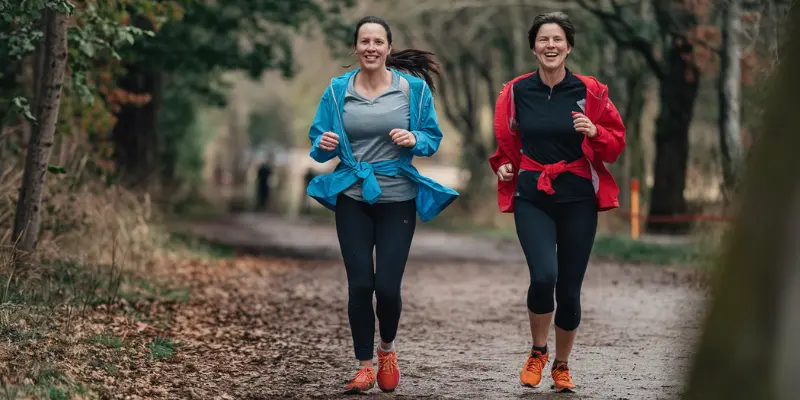
What you wear while running matters more than you think. The wrong fabric can leave you feeling sweaty, itchy, or too hot. Let’s talk about the best fabrics that keep you comfortable mile after mile.
Why Fabric Choice is Important
When you run, your clothes need to do three things well:
- Pull sweat away from your skin so you stay dry
- Let your skin breathe to prevent overheating
- Move with your body without rubbing or chafing
Cotton might feel soft at first, but it’s the worst for running because it holds onto sweat like a sponge.
The Best Fabrics for Runners
1. Polyester
- Why it’s great: Dries super fast and keeps you cool
- Best for: Most running conditions, especially warm weather
2. Nylon
- Why it’s great: Strong and smooth against your skin
- Best for: Long runs where durability matters
3. Spandex (Lycra)
- Why it’s great: Stretches perfectly with your movements
- Best for: Tight-fitting gear like leggings and compression shirts
4. Merino Wool
- Why it’s great: Keeps you warm without making you sweaty
- Best for: Cold weather running
Tip: Many running clothes mix these fabrics (like polyester-spandex) to get the best features of each.
Running Shoes: The Most Important Gear

Your running shoes are like tires for a car – they keep you moving smoothly and protect you from bumps along the way. Pick the wrong pair and you might end up with sore feet or even injuries. Let’s make sure you get it right.
What to Look For in Running Shoes
Cushioning
Good shoes should feel like they’re softening each step. Too little cushion and your joints take the hit; too much and you lose connection with the ground.
Arch Support
Your foot’s arch needs proper support whether it’s high, low, or somewhere in between. The right support prevents aches after your run.
Proper Fit
There should be:
- A thumb’s width between your longest toe and shoe end
- No pinching on the sides
- The heel shouldn’t slip when you walk
When to Replace Them:
If the tread looks smooth or the cushion feels flat (usually every 300-500 miles), it’s time for new shoes.
Types of Running Shoes
Road Running Shoes
- Lightweight with smooth soles
- Made for pavement and treadmills
- Good cushioning for hard surfaces
Trail Running Shoes
- Grippy treads like hiking boots
- Extra protection against rocks
- Often waterproof
Quick Tip: Try shoes on in the afternoon when your feet are slightly swollen, just like when you run.
Dressing for Different Weather
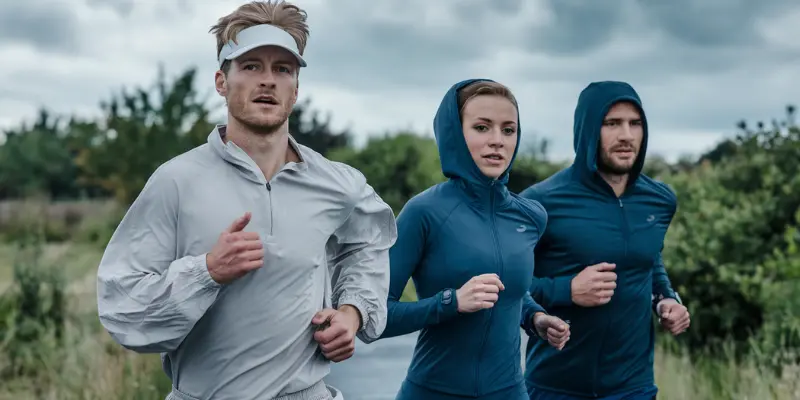
Running outside means dealing with whatever weather comes your way. The right clothes can make hot days bearable, cold days comfortable, and rainy days doable. Here’s how to dress smart for any forecast.
Hot Weather Running
When the sun’s blazing, you’ll want to:
- Wear light colors (they reflect heat instead of absorbing it)
- Choose loose, breathable fabrics that let air flow through
- Add sun protection like a visor and sweat-proof sunscreen
Remember: A lightweight, light-colored tank top and shorts will keep you much cooler than a dark cotton tee.
Cold Weather Running
Layering is your best friend when temperatures drop:
- Base Layer: Tight, moisture-wicking fabric to keep sweat off your skin
- Insulating Layer: Something warm but breathable like fleece
- Outer Layer: Windproof jacket to block chilly air
Don’t Forget:
- Gloves (your hands get cold first)
- A hat or headband (you lose lots of heat through your head)
- Cover your ears if it’s really cold
Rainy Weather Running
Running in the rain can actually feel great if you’re dressed right:
- Water-resistant jacket (keeps light rain out but still breathes)
- Avoid cotton (it gets heavy when wet)
- Wear a brimmed hat to keep rain off your face
Pro Tip: After your run, stuff wet shoes with newspaper to help them dry faster.
Extra Running Gear (Optional but Helpful)
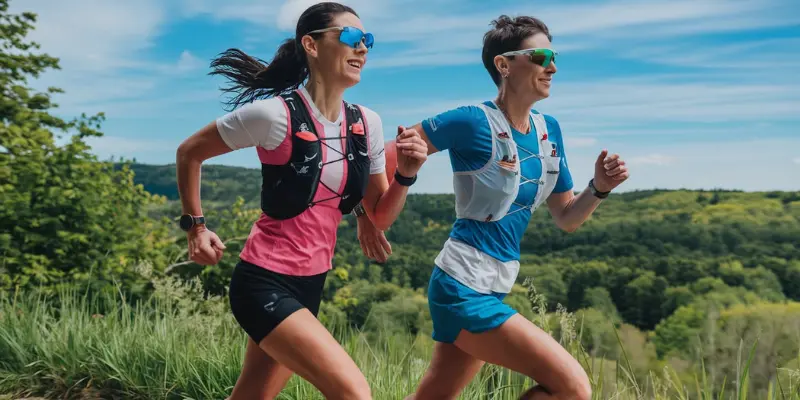
While you can run with just shoes and clothes, some extra gear can take your runs from “okay” to “awesome.” These aren’t must-haves, but they solve common problems runners face. Let’s look at what’s worth considering.
Socks That Don’t Ruin Your Run
Regular cotton socks turn into wet, wrinkly messes that cause blisters. Good running socks:
- Wick away sweat (look for polyester or wool blends)
- Have extra cushion in high-impact areas
- Fit snugly without wrinkles that rub
Try This: Seamless toe designs prevent annoying rubbing on long runs.
Sports Bras That Actually Work (For Women)
A regular bra won’t cut it for running. You’ll want:
- Encapsulation or compression styles (not just padding)
- Wide, non-slip straps that stay put
- Moisture-wicking fabric to stay dry
Good Sign: If you can’t jump comfortably in the dressing room, keep looking.
Carrying Water on Long Runs
For anything over 5 miles, hydration helps:
- Belts with small bottles (good for shorter distances)
- Vests with water bladders (better for long trail runs)
Tip: Practice drinking while running before race day!
Staying Safe When Running at Night
If you run when it’s dark:
- Reflective strips on clothes/shoes
- Lights (headlamp or clip-on blinkers)
- Bright colors that stand out
Smart Move: Run facing traffic so you see cars coming.
These extras solve real problems runners face. Which one would make your runs better? I’m happy to suggest specific products if you need help!
FAQs
1. What is the best thing to wear for a run?
Opt for lightweight, moisture-wicking fabrics like polyester or nylon. Always wear proper running shoes for support. Dress in layers if it’s cold outside.
2. Can I jog in normal clothes?
You can, but cotton t-shirts and regular shorts may cause chafing and discomfort. For better performance, choose athletic clothes designed for running. Even simple workout clothes are better than everyday wear.
3. Which type of cloth is best for running?
Synthetic fabrics (polyester, nylon, spandex) are ideal; they dry quickly and allow movement. For cold weather, merino wool provides warmth without overheating. Avoid cotton because it absorbs sweat and stays wet.
4. What temperature should you wear running tights?
Wear tights when temperatures drop below 50°F (10°C). They help keep muscles warm in chilly weather. In warmer conditions, opt for breathable shorts instead.
5. How do I know if my running shoes fit right?
There should be a thumb’s width of space between your longest toe and the shoe’s front. The heel should stay snug without slipping. Walk or jog a few steps to test comfort before buying.
Conclusion
So guys, in this article, we’ve covered what to wear running in detail from breathable fabrics to weather-specific gear. If there’s one thing I’d personally recommend, it’s investing in moisture-wicking socks and a well-fitted pair of running shoes first. Trust me, your feet will thank you later!
Now it’s your turn! Lace up, test out these tips, and see how much more comfortable your runs feel. Got a favorite running gear hack? Share it in the comments. I’d love to hear what works for you!

- Be Respectful
- Stay Relevant
- Stay Positive
- True Feedback
- Encourage Discussion
- Avoid Spamming
- No Fake News
- Don't Copy-Paste
- No Personal Attacks

- Be Respectful
- Stay Relevant
- Stay Positive
- True Feedback
- Encourage Discussion
- Avoid Spamming
- No Fake News
- Don't Copy-Paste
- No Personal Attacks



